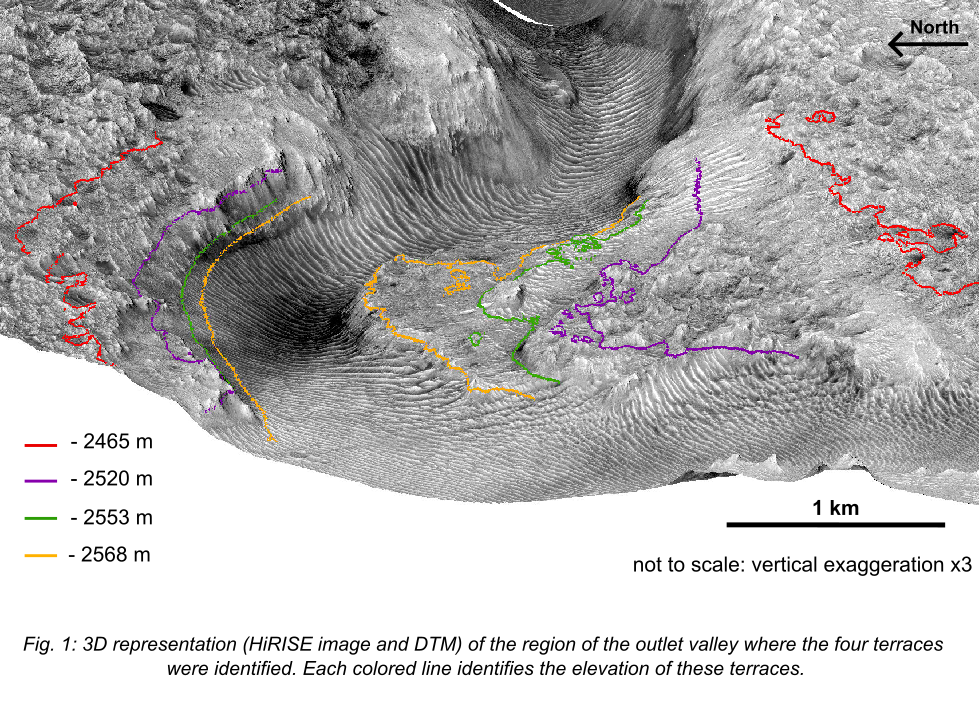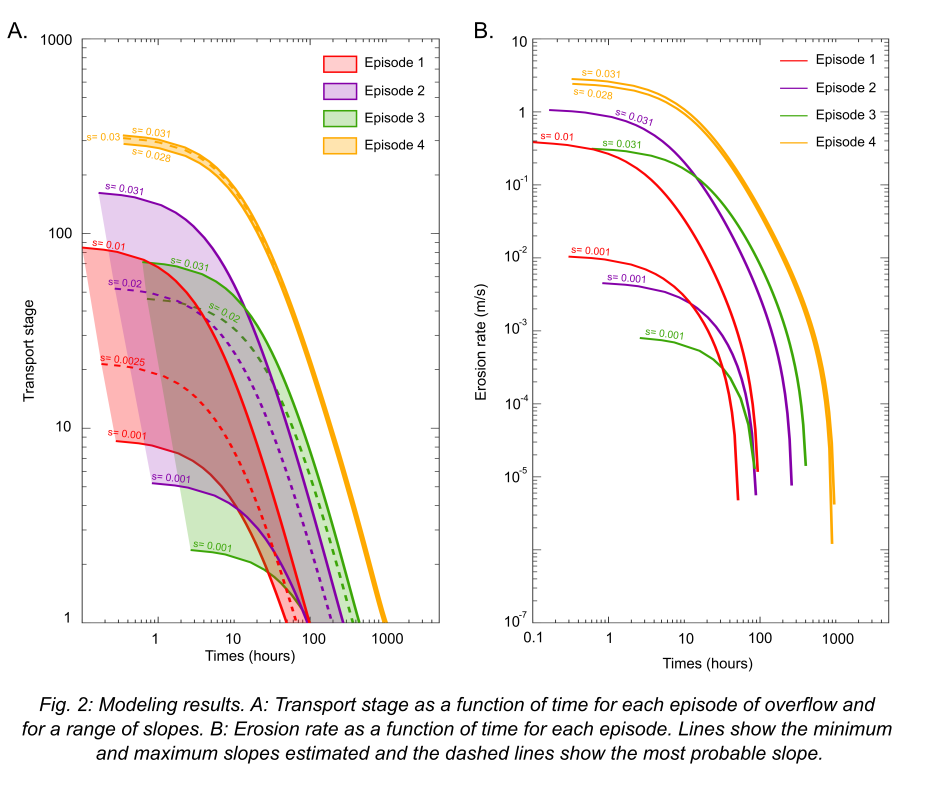- 1Nantes Université, Univ Angers, Le Mans Université, CNRS, Laboratoire de Planétologie et Géosciences, LPG UMR 6112, 44000 Nantes, France (justine.villette@univ-nantes.fr)
- 2University of Chicago, Chicago, IL, USA
Introduction
Orbital and in situ images have revealed past surface water activity on Mars. Morphological observations include valley networks [1, 2] and the presence of a few hundred paleolakes [3-5]. Jezero crater, which is the landing site for the Perseverance rover, is one of the most extensively studied palaeolakes today. This site is of interest for understanding ancient martian hydrologic activity, and for finding potential traces of past life. Current observations suggest that Jezero crater was fed by two inlet valleys [6] which are at the origin of two sedimentary fan deposits, interpreted as deltaic deposits [6, 7]. An outlet valley, Pliva Vallis, is present on the eastern crater rim [6] raising the question of whether the lake system operated mainly as an open basin, or as a closed basin system with episodic overflows. Resolving this uncertainty would improve our understanding of the Pliva Vallis’ evolution within time and consequently our knowledge of the history of Jezero’s lake.
Observations and interpretation
We performed a qualitative morphological study of the outlet valley using digital elevation models and orbital images (CTX and HiRISE data) acquired by Mars Reconnaissance Orbiter. First, we observed stratified and re-incised sedimentary deposits on the floor and inner walls of Pliva Vallis that we infer are a result of the fluvial activity of this valley. Alternating fine deposits and strata containing meter-scale boulders reflect the variation of flow intensity over time. Regarding the morphometry of the outlet valley, we observed several topographical features that are atypical for overland flows [8].
Indeed, the decrease of the valley width and depth from upstream to downstream, the presence of a perched channel and the observations of several topographic rises along the valley floor suggest a valley with a discontinuous activity and at least two episodes of energetic overflow. In addition, a few meters from the start of Pliva Vallis, we noticed the presence of four mains topographical steps within the wall of the valley, which are marked by the four colored lines in Figure 1 and are interpreted as four bedrock incisions terraces. This morphological observation confirms the episodic activity of Pliva Vallis with four rapid flow events caused by four phases of breach in the eastern rim of Jezero crater.

These observations suggest a scenario of lake overflow with at least four different events, responsible for the progressive and discontinuous incision of the outlet valley. Thus, we propose that the Jezero’s crater lake overflowed sporadically during the four breach events before emptying completely as a closed system though evaporation and infiltration, with limited fluvial input [9].
Modeling of the breach erosion processes
To give a first estimate of the duration of these four episodes of lake overflow and valley incision, we use a simple 0-D mathematical model, simulating valley formation by breach erosion and crater lake overspilling [10, 11]. This model provides a simple simulation of breach formation, particle transport and erosion rate in the outlet valley during time. Considering the imposed assumptions, (e.g., uniform valley geometry, no pre-existing valley, no downstream change in flow velocity, etc.), we applied the model to the Jezero’s crater lake in order to simulate the four overflow episodes previously identified, using the valley width and depth and the local slope measured for each episode where the four erosional terraces are identified. We assume a flow into the crater of about 100 m3/s, and we found that varying this value has little effect on our results given the order of magnitudes differences in discharge rate between this steady-state process and the overflows. Figure 2A shows the decrease of particle transport (D50 of 0.076 m [12]) over time for each event and for a range of slopes. As soon as the breach occurs, the flow loses energy progressively at first and then rapidly, until it can carry no more particles. The erosion rate can also be calculated during lake emptying for each episode (Figure 2B). Over time, erosion slows and tends to become zero as the flow decreases and loses energy. Modeling results suggest that each flooding and incision event in the outlet valley lasted less than a few weeks, or even a few days for some episodes. The time scales calculated with this model are consistent with our interpretation that flow events in the outlet valley were rapid and discontinuous.

Conclusion and outlook
The study of the outlet valley of Jezero crater helps us to understand better the activity of this lake. Our observations allow us to propose a new scenario of evolution of the Jezero’s crater lake - a closed basin system which was episodically and temporary opened during at least four identified overflow events.
References
[1] Pieri, D. C. (1980) Science, 90, 895–897.
[2] Carr, M. H. (1987) Nature, 326, 30–35.
[3] De Hon, R. A. (1992), Earth, Moon and Planets, 56, 95–122.
[4] Cabrol, N. A. and Grin, E. A. (1999), Icarus, 142, 160–172.
[5] Wharton, R. A., et al. (1995), Journal of Paleolimnology, 13, 267–283.
[6] Fassett, C. I. and Head, J. W. (2005), GRL, 32, L14201.
[7] Schon, S. C. et al. (2012), PSS, 67, 28–45.
[8] Schumm, S. A. and Ethridge, F. G. (1994), SEPM Society for Sedimentary and Geology, book.
[9] Mangold, N. et al., (2024) Constraints on Jezero paleolake history from its fluvial input, Abstract for The Tenth International Conference on Mars.
[10] Warren, A. O. et al. (2021), EPSL, 554, 116671.
[11] Holo, S. J. and Kite. E. S. (2019), 50th LPSC, Abstract #2481.
[12] Mangold, N. et al. (2024), JGR Planets, 129, e2023JE008204.
How to cite: Villette, J., Mangold, N., Conway, S., Le Deit, L., and Kite, E.: The evolution of Pliva Vallis, the outlet valley of the Jezero's crater lake on Mars, Europlanet Science Congress 2024, Berlin, Germany, 8–13 Sep 2024, EPSC2024-236, https://doi.org/10.5194/epsc2024-236, 2024.